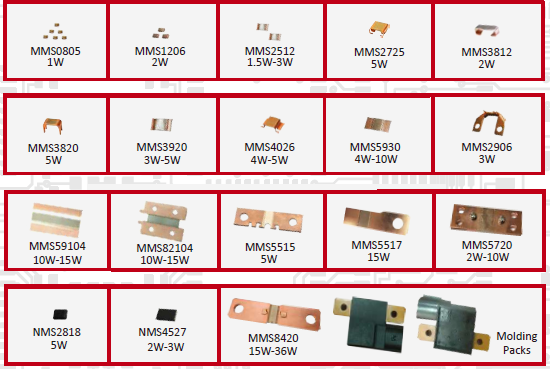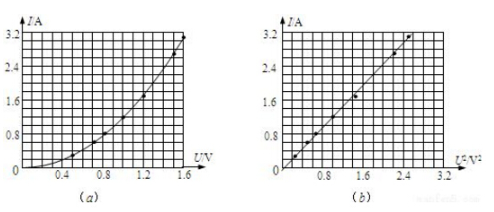Position:Home » Industry News
Why Current Sensing Resistors are Widely Used in Automotive Electronics and Home Appliance?
Writer:Microhm Page View:Date:2019-04-03
Current sensing resistor, including shunt resistor, is very popular for their high power, low resistance and low inductance. It is conducive to control the noise for high frequency and high speed application. And because of the inverted structure and long edge, the power dissipation ability is improved.

The rated power of the current sensing resistor indicates the maximum energy that the resistor can consume without damage or degradation. Most manufacturers say their free air flow is rated at 70 °C. Above this temperature, the stress on the resistive material decreases. It also indicates that power consumption must be reduced to a temperature of 0.
According to the copper nickel alloy or MnCu alloys used, the power drop curve shows a higher reduction point. This is due to the unique structure of the element and is usually due to the fact that the current detection resistance series can be used for the same rated power of higher rated power or smaller housing size than many other components.

This reliable current measurement method can be found in automotive applications, but also in home appliance technology. This kind of current sensing resistor can be found in the trunk cover control or seat adjustment; the valve regulator or brake system also requires accurate current measurement. Manufacturers of cleaning robots, such as cleaning robots used in residential areas, can use resistors to solve three problems at a time. The DC / DC converter of the robot power supply requires a 10m Ω shunt with a power loss of at least 2 W, as the current above 10 A should be measured and the controller needs an input voltage of at least 100 mV. Normally for 2W heat dissipation, size 2512 shunt is required, but due to limited space, it is not suitable.

The rated power of the current sensing resistor indicates the maximum energy that the resistor can consume without damage or degradation. Most manufacturers say their free air flow is rated at 70 °C. Above this temperature, the stress on the resistive material decreases. It also indicates that power consumption must be reduced to a temperature of 0.
According to the copper nickel alloy or MnCu alloys used, the power drop curve shows a higher reduction point. This is due to the unique structure of the element and is usually due to the fact that the current detection resistance series can be used for the same rated power of higher rated power or smaller housing size than many other components.

This reliable current measurement method can be found in automotive applications, but also in home appliance technology. This kind of current sensing resistor can be found in the trunk cover control or seat adjustment; the valve regulator or brake system also requires accurate current measurement. Manufacturers of cleaning robots, such as cleaning robots used in residential areas, can use resistors to solve three problems at a time. The DC / DC converter of the robot power supply requires a 10m Ω shunt with a power loss of at least 2 W, as the current above 10 A should be measured and the controller needs an input voltage of at least 100 mV. Normally for 2W heat dissipation, size 2512 shunt is required, but due to limited space, it is not suitable.
Latest News
- Resistor's role in measuring and correcting LED,,,
- Single through-hole resistors' characteristics ,,,
- Why shunt resistors for current sense applicati,,,
- Metal-film resistors with small size, high resi,,,
- 36W High-Current Shunt Resistors MMS8420,,,
- 1W Surface Mount Resistor MPR1206,,,
- An Overview of Microhm Electronics' Resistor Pr,,,
- More anti-sulfur resistors used in harsh envir,,,
- Resistance changes with temperature,,,
- 140W TO247 High Power Heatsinkable Resistor,,,
- MMS5930 is ideal for current sensing in industr,,,
- Shunt resistors selection for engineers' design,,,
- Considerations for choosing precision resistors,,,
- Ceramic Encased Cement Resistors NWH Series for,,,
- Resistors for Passive Balancing in Battery-Pow,,,
Hot Articles
- Microhm will take part in 10th Automotive World,,,
- Thanks for Visiting Microhm's Booth E5-5706 in ,,,
- Resistors in Short Supply: Blame Cars,,,
- New lunch: High Power Precision Shunt Resistor,,,,
- How to Test a Resistor,,,
- Innovative Technology, Future Electric: Electri,,,
- What is Precision Resistors?,,,
- SMD Resistors Sizes and Packages,,,
- The Construction and Features of Metal Film Res,,,
- What is a TO-220 Resisor?,,,
- Hot Selling Products: Precision Shunt Resistors,,,
- How to Calculate the Equivalent Resistance Valu,,,
- What is a Fixed Resistor?,,,
- Resistors in LED Circuits,,,
- Resistors Types and Materials Overview,,,
Resistance applications
- Why Zero-Ohm Resistors?,,,
- Miniature future for passive electronic compone,,,
- Industrial Roberts Applied to Solar Photovoltai,,,
- Surface Mount Resistor's Size and Package ,,,
- Precision Resistors' Construction and TCR,,,
- Urbanization Development Bringing the Transform,,,
- Carbon Film Resistors' Features and Application,,,
- Select the Right Resistor for Harmonic Filterin,,,
- The Main Application for High Precision and Low,,,
- BMS for New Energy Vehicle,,,
- The Measurement Accuracy of Automotive Shunt is,,,
- Heater Blower Motor Resistor in Air Conditioner,,,
- The Four Important Functions of Alloy Resistors,,,
- Shunt Resistor MMS8420 for High Current Stable ,,,
- Difference Between High Precision Resistors and,,,
